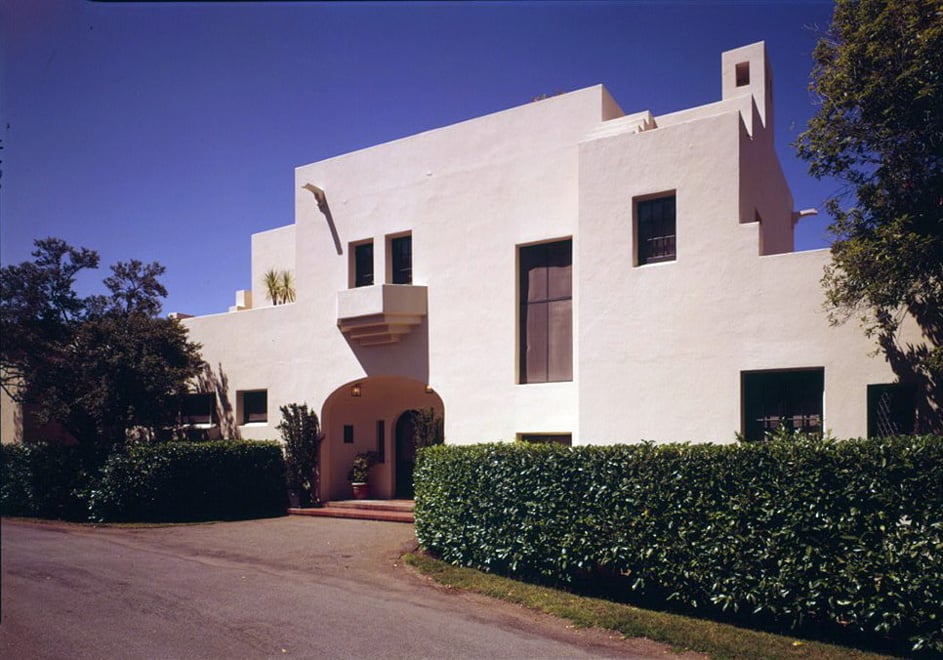At a public hearing last week, the Santa Clara County Planning Commission unanimously made a favorable recommendation to the Santa Clara County Board of Supervisors regarding Stanford’s plans to build new faculty residences in the San Juan Hills neighborhood, despite opposition from several San Juan Hills residents.
The proposed site for the development is in the faculty subdivision just south of Campus Drive East, at the intersections of Cabrillo, Dolores and Constanzo Streets. Two homes currently standing on the lot will be demolished in favor of seven smaller residences and a parklet.
Roth House, which sits on the edge of the lot, will remain untouched.
Stanford began planning the project two years ago in an effort to accommodate more faculty on campus. Development on this land requires the approval of the County Board of Supervisors.
“The new homes are important as we seek to provide housing solutions for our faculty in this incredibly supply-strained market,” said faculty staff housing executive director Whitney McNair during the hearing. “We designed a project … [that] will allow seven new families the opportunity to live next to their work, bike to campus and be part of the faculty neighborhood.”
The commission backed the proposal, citing a lack of housing in the area surrounding Stanford.
“I think we need more housing,” said commissioner Scott Leaver. “I think this is an opportunity to bring about more housing, and I would certainly support that.”
A historic neighborhood
The decision came as a disappointment to some San Juan Hills residents, who strongly objected to both the lot size and the architectural style of the proposed homes.
“I think overall the nature of the neighborhood is to have larger lots and houses that are built in a historic character,” said Stanford English professor and San Juan Hills resident Blair Hoxby.
Caroline Ruth, another resident, submitted a petition signed by 120 homeowners who feel that the development fails to maintain the historic integrity of the neighborhood, which is home to the Lou Henry Hoover House and President John F. Kennedy’s former residence.
“We would like to see a development that is sensitive to the area around it, reflects the history and enhances the neighborhood rather than making it into some sort of a mixture that really degrades the whole environment,” Ruth said.
McNair defended the development, contending that it would not be unique in introducing modern designs or varying lot sizes to the neighborhood.
“The lots in the area do vary in size,” she said. “There are homes built in every decade, so they are not all built at the same time. There are several beautiful historic-type homes in the neighborhood, but that isn’t the case for every single lot in the area, and we think these homes will fit right in.”
According to David Kirk, senior project manager at the Stanford Department of Project Management, the project team was mindful of the history of the neighborhood and took into account community feedback as it iterated through designs.
“We started by looking at the context of the neighborhood and the existing architectural styles,” Kirk said. “We reached out two years ago to the executive committee, to the neighborhood council, and went back to them again a year later. We went through two public forum discussions, and so we feel that there has been a lot of outreach and a lot of response to community input.”
Economic impact
Hoxby said that the development could potentially have a negative impact on area home prices.
“Those who do purchase houses have made a major investment in this area, and if the area changes, they are essentially losing a lot of their very important savings because Stanford faculty … have to put almost all of their extra savings into their housing,” Hoxby said.
This sentiment was echoed by Caroline Hoxby, a Stanford economics professor whose work focuses on the effects of neighborhood schools, properties, taxes and local amenities on house prices. Caroline Hoxby and Blair Hoxby are spouses.
Caroline Hoxby’s analysis of the effect of the development on home prices estimated that home values would be reduced by 24 to 31 percent due to the smaller lot size and lower quality of the development as compared to neighboring homes.
“The typical faculty person that comes to Stanford … ends up devoting a very disproportionate share of his or her income to paying for housing in the area, and they save almost nothing outside of their home equity,” Caroline Hoxby said. “It is a very serious matter if the University forces developments on faculty that sharply reduce the value of their home.”
Several commission members argued against Caroline Hoxby’s analysis.
“I just cannot fathom, despite studies that have been done, that lots of this size would have such a negative impact on neighboring property values,” said commissioner Vicki Moore ’83.
Assistant Vice President for Government and Community Relations Jean McCown concurred with Moore, saying that the smaller lots would be in high demand.
“The University has previously seen more success with homes built on smaller lots… We know that the faculty that are looking for housing really want these [types] of smaller properties,” McCown said.
Not all San Juan Hills residents were opposed to the measure for economic reasons.
Ken Shotts ’93 Ph.D ’99, a resident of the San Juan Hills community and a professor at Stanford’s Graduate School of Business, voiced his support for the project on the grounds that it would introduce more affordable homes to the area. In the previous academic year, Shotts served as co-chair of an affordability working group for a Long-Range Planning study conducted by the University and was troubled by the number of faculty unable to afford area housing.
“I saw the pain that people were suffering not having access to affordable housing in this area,” Shotts said to the commission. “Something needs to be done about this, and what can be done within Stanford’s control is building more housing.”
Contact Serena Debesai at sdebesai ‘at’ stanford.edu.
